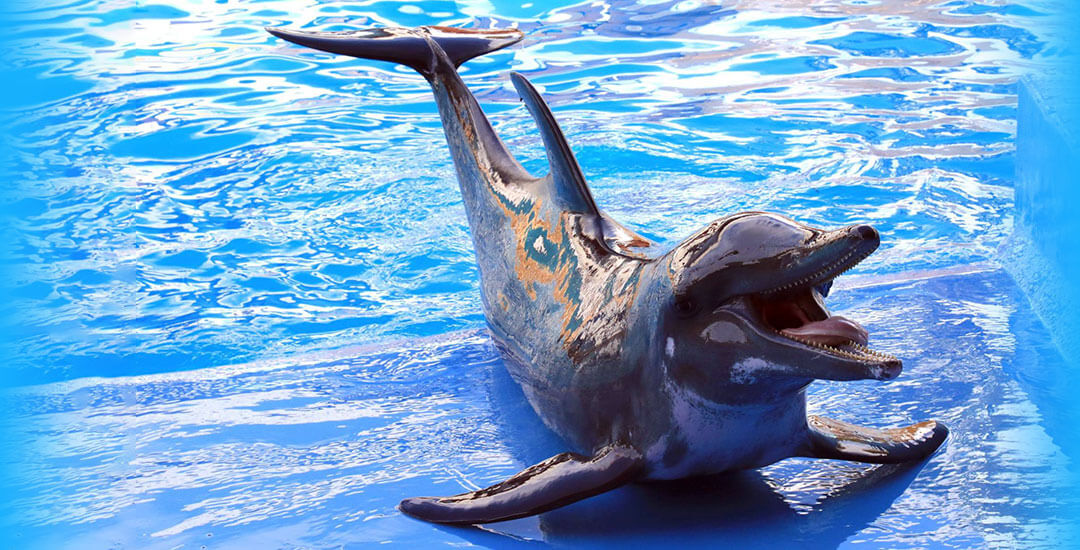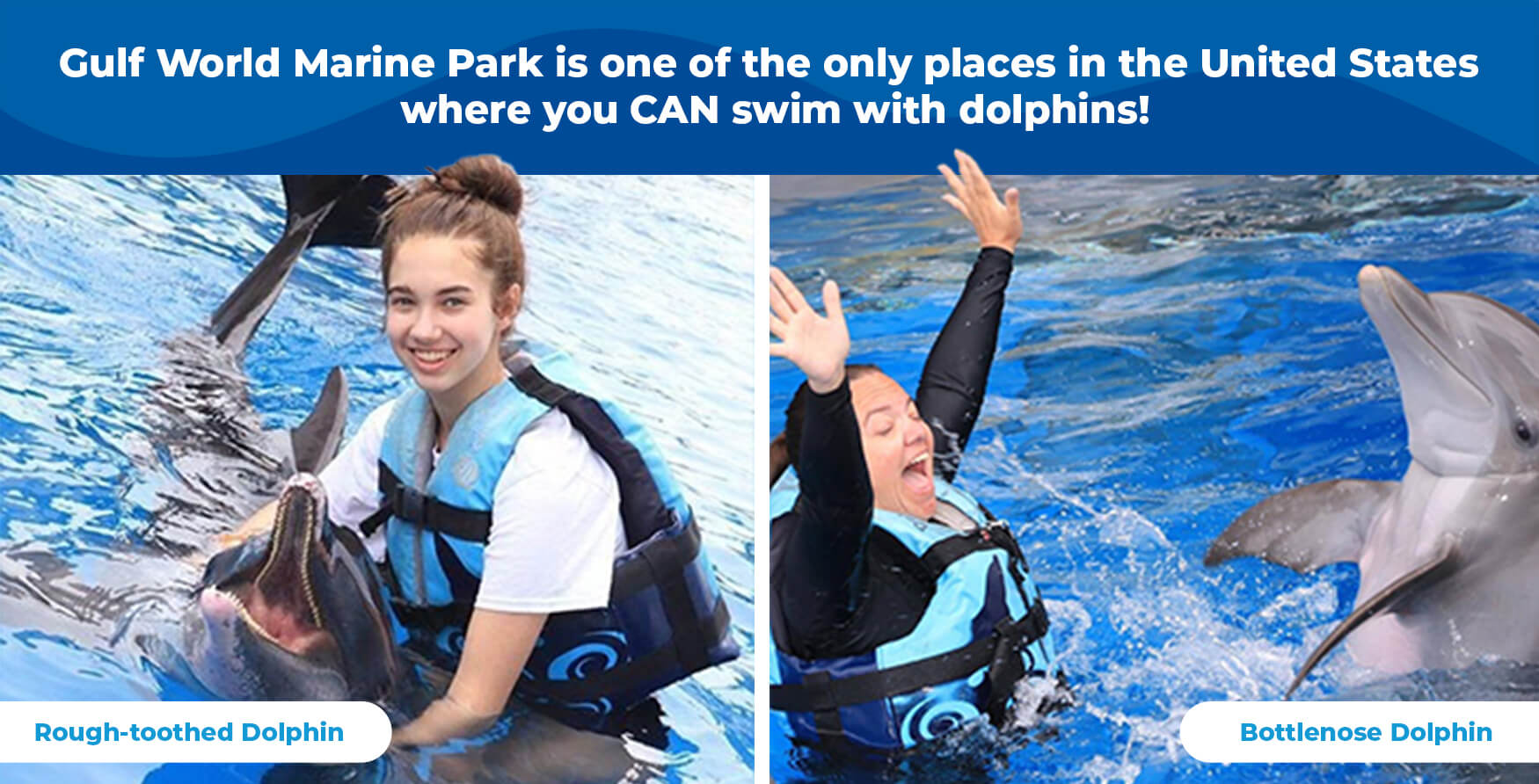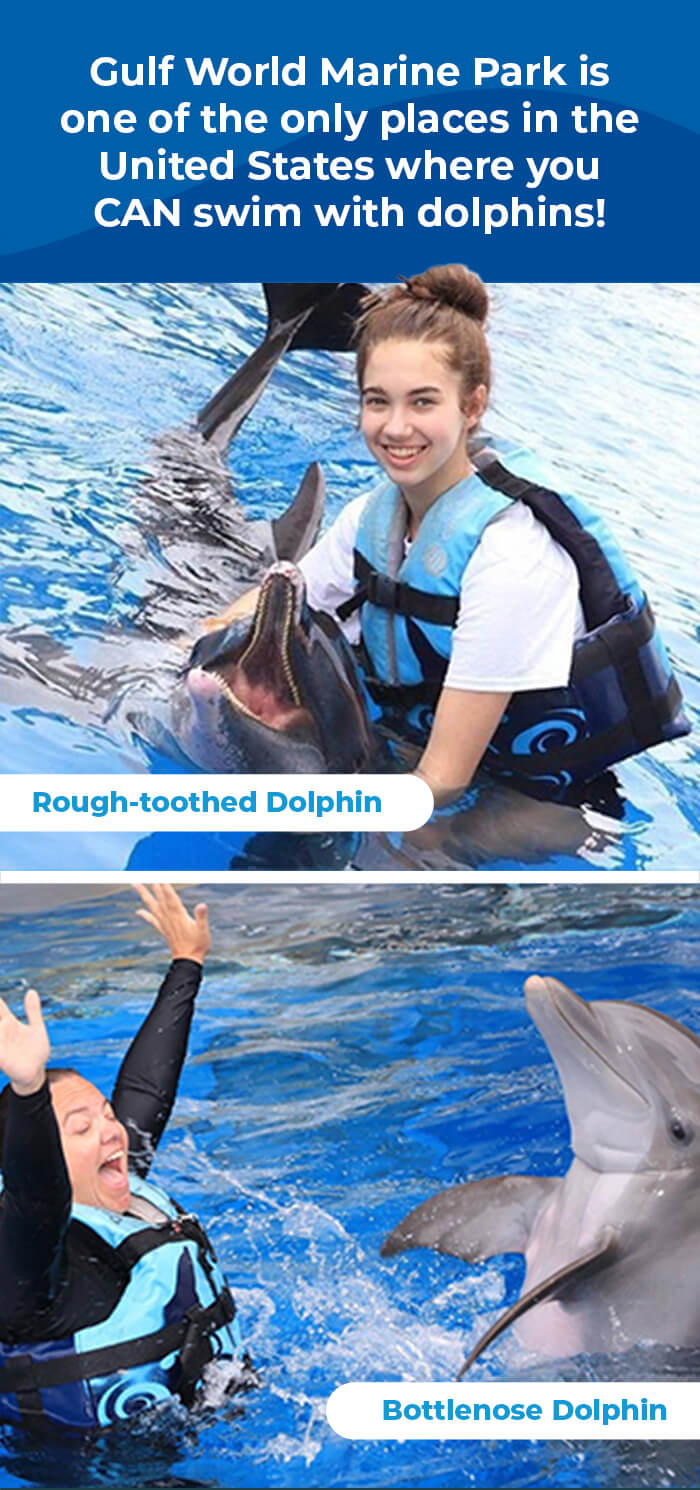
The Rough-toothed Dolphin, commonly mistaken for the Bottlenose Dolphin, is an intelligent species of aquatic marine mammal named after its seemingly prehistoric appearance.


Physical Characteristics of Rough-toothed Dolphins


What do Rough-toothed Dolphins Eat?


Preferred Habitat of the Rough-toothed Dolphins


Where do Rough-toothed Dolphins Live?


Fun Facts about Rough-toothed Dolphins
Physical Characteristics of
Rough-toothed Dolphins

One of the easiest ways to tell a Rough-toothed Dolphin from other similar tropical species is by the shape of their head and nose. They are known for having an especially narrow “beak” extending from their cone-shaped head. The tapering shape causes them to be without the creased melon, or forehead, that is characteristic of most dolphin species.
These seemingly primitive dolphins have dorsal fins that are more pronounced than other species, and their flippers are located further back along the body than on similar dolphin species. The rigid, and sometimes wrinkled, appearance of this species’ teeth is the main characteristic that gives them a prehistoric appearance. Classified as small dolphins, the Rough-toothed variety is known to weigh anywhere between 198 and 342 pounds at maturity. From tip of the mouth to tip of the tail, these dolphins can grow to be nine feet in length but are often closer to six feet.
Rough-toothed Dolphins have a dark gray body that fades to light gray and then to white the closer you get to the stomach, or underside. The white coloring often extends from the belly up past the throat under the beak and to the tip of the nose, or lips. The white markings can even have pink tones mixed in on some Rough-toothed Dolphins.

These marine mammals are known to have an average life expectancy of at least 36 years. There have been Rough-toothed Dolphins in optimal conditions known to live 12 years past the expectancy, reaching as old as 48 years!

Rough-toothed Dolphins are carnivorous creatures that prefer to eat fish, but will also consume squids, mollusks and cephalopods. When hunting for fish, they usually go for the types that swim at the water’s surface rather than diving deep.
These warm-blooded beings enjoy tropical waters, usually over 77 degrees Fahrenheit. Rough-toothed Dolphins typically occur in deep, offshore waters of all the world’s major oceans. One of the key factors in finding the perfect habitat for these dolphins is the availability and convenience of prey.
When tracking Rough-toothed Dolphins in U.S. waters, scientists have identified three different population groups. There are an estimated 6,000 dolphins in the Hawaiian stock, 600 in the Northern Gulf of Mexico stock, and an additional 300 in the Western North Atlantic stock. Outside of the U.S., these dolphins are found in the waters of the Caribbean, Mediterranean Sea, Eastern Tropical Pacific, and the Indian Ocean.

Like other species of dolphins, the Rough-toothed Dolphins communicate with each other using echolocation clicks, burst pulse signals, whistles, and synchronous swimming patterns. They are usually traveling in groups of 10 to 30 dolphins but are also known to form schools of up to eight different groups. These schools can reach up to 160 individual dolphins at one time! The Rough-toothed Dolphin is a highly sociable species of dolphin that can frequently be found traveling with other species including bottlenose dolphins, pantropical spotted dolphins, Fraser’s dolphins, spinner dolphins and short-finned pilot whales.

The Bottlenose Dolphin is one of the most commonly known and studied dolphin species, especially in the U.S. Atlantic Ocean.


Physical Characteristics of Bottlenose Dolphins


Life Span of Bottlenose Dolphins


What do Bottlenose Dolphins Eat?


Preferred Habitat of the Bottlenose Dolphins


Where do Bottlenose Dolphins Live?


Fun Facts about Bottlenose Dolphins
Physical Characteristics of
Bottlenose Dolphins

The Bottlenose Dolphin is most recognizable by its gray back that fades to white on its lower jaw and stomach and its short, thick snout. This is where the term “bottlenose” comes from. Oftentimes, the coastal dolphins living inland are lighter in color and smaller than the large dolphins that swim in offshore packs.

These aquatic mammals are in for the long haul! The Bottlenose Dolphin is known to live to be an average of 40 years old in the wild and in captivity. Some dolphins have even been known to live 60 years or more.
Bottlenose Dolphins are active predators that prey upon a variety of sea life such as various types of fish, squid, crab, shrimp, and other crustaceans. Food may be obtained individually, or individuals may form a group to hunt large schools of fish.
Different dolphins prefer different ecosystems. For instance, the majority of coastal Bottlenose populations choose to live among bays, seagrass beds, estuaries, and sometimes beaches. This type of Bottlenose is also known for sometimes being territorial over its habitats. On the other hand, the population of Bottlenose that prefers the ocean and deep waters are less territorial and more nomadic in choosing their habitat. Inland populations mostly prefer warmer, more shallow waters, while oceanic populations of the Bottlenose are happy in deeper waters. These aquatic mammals have even been known to inhabit rivers depending on resources available, water depth, temperature, and what sediment types are present.
This species is the most prevalent type of dolphin found in the U.S. coastal waters from Cape Cod through the Gulf of Mexico. They are also frequently found in the Pacific Ocean from northern Japan to Australia, from Southern California to Chile, and as far west as the Islands of Hawaii.
On the other side of the United States in the Atlantic Ocean, Bottlenose Dolphins are observed from Nova Scotia to Patagonia as well as from Norway to the Southern tip of Africa.
These species of dolphins are also present in the Black and Mediterranean Seas when conditions are favorable.

Similar to most dolphin species, inland, also referred to as coastal, Bottlenose Dolphins are known to form small groups of 20 or less members. The offshore populations, however, can be known to form herds of over 100 dolphins that travel in migratory patterns.


The short answer: No.
But, Gulf World Marine Park is one of the only places in the United States where you CAN swim with dolphins!
“Why is it not advisable to swim with wild dolphins, but it’s okay to swim with dolphins at Gulf World?”
Swimming with dolphins in the wild is not only dangerous, but it is also not legal, and you could be hit with a fine or be arrested for harassing dolphins.
In the wild, you risk harassing or harming the dolphins while attempting to chase them down in a boat for someone to get close to the animals. If you succeed in approaching a wild dolphin, it’s essential to keep in mind that these are wild and untrained animals with unpredictable behavior that is unsafe for both the dolphin and you. Dolphins in the wild deserve to be treated with our care and respect.
A dolphin’s curiosity of a human should not be interpreted as friendly behavior. You are an unfamiliar object that needs to be investigated, which could disrupt the dolphin’s natural behavior, which can cause stress. You could be interrupting a resting dolphin or one that was trying to feed.
The presence of humans in the water near dolphins can also result in a decreased fear of humans, which can result in making dolphins more vulnerable to boat strikes and harassment.
However, Gulf World Marine Park is a safe place to swim with dolphins! All of Gulf World’s animals are either rescued, deemed non-releasable, or born into human care. This means that the dolphins you are swimming with are not at risk because of you, nor are they a risk to you.
At Gulf World, you are in a controlled environment with our trained animals, and our dolphins are used to humans. By following our set rules for the encounters, the dolphins are not stressed. You will always be accompanied by a skilled trainer in the water with the dolphins, unlike in the wild.
If you are interested in learning more, or if you would like to book your own dolphin adventure, please call us today at 850.234.5271 or check out our many dolphin tour options, outlined below!
Gulf World Marine Park offers numerous opportunities to swim with different species of dolphins, including our native Bottlenose!
There are a number of different ways to experience a swim with our friendly Dolphins, both Bottlenose and Rough-toothed, here at Gulf World Marine Park.